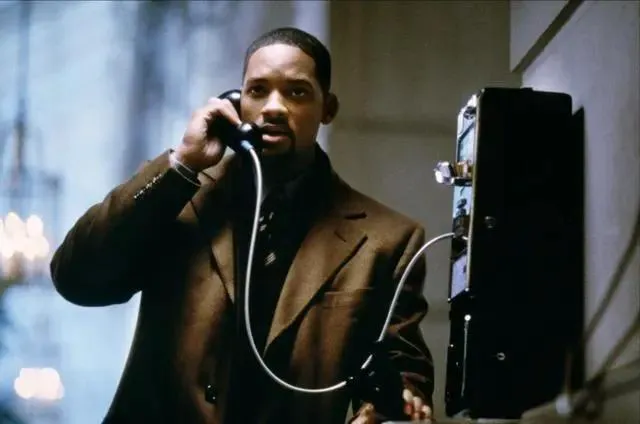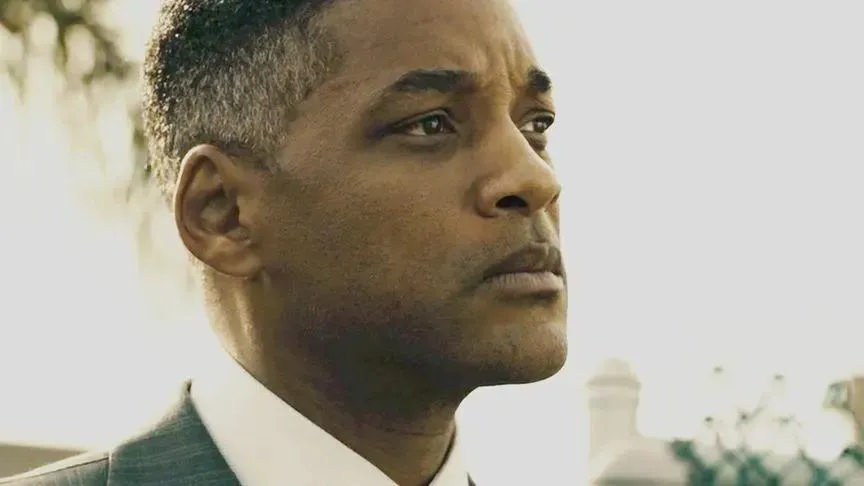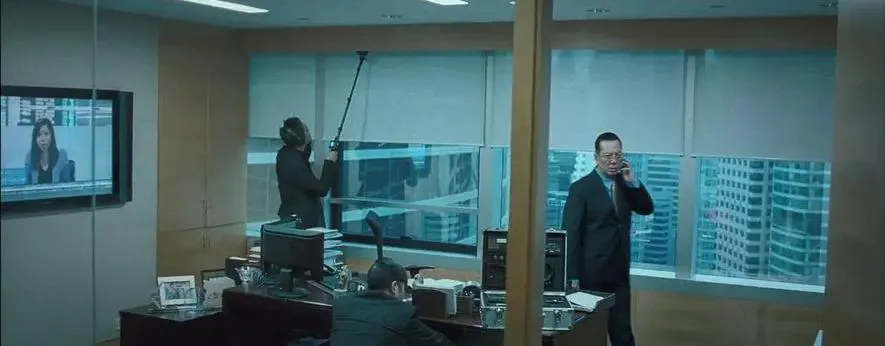Movie Introduction

“Enemy of the State,” released in 1998, is a gripping American action thriller directed by Tony Scott, starring Will Smith and Gene Hackman. The film delves into the conflict between individual privacy and government surveillance, following an attorney who becomes entangled in a government conspiracy and must team up with a former intelligence operative to evade relentless monitoring and pursuit.
The story centers on Robert Dean (Will Smith), a Washington D.C. lawyer who unwittingly becomes a target after a government agent plants a crucial piece of evidence in his bag during a chase.

Now labeled a national “enemy,” Robert finds himself hunted by government agencies, intelligence services, and shadowy organizations.
In his desperate situation, Robert seeks help from Brill (Gene Hackman), a reclusive former NSA operative with the skills to navigate and subvert government surveillance systems. Together, they form an uneasy alliance to fight back against the relentless pursuit.
As they evade capture, Robert uncovers a vast government conspiracy, revealing a surveillance network that monitors the lives of ordinary citizens. Government agents and criminal elements use advanced technology to track and control him, violating his privacy. Robert resolves to expose the truth and seek justice.

The film portrays Robert’s desperate fight for survival while highlighting the dangers of unchecked government surveillance. It sparked widespread debate about privacy rights and personal freedom.
Upon its release, “Enemy of the State” achieved both critical and commercial success. Its thrilling plot, fast-paced action, and strong performances captivated audiences and ignited discussions about government oversight. The film’s exploration of surveillance and privacy remains relevant today.
The film’s prescience in depicting surveillance technologies has been noted, with some of its concepts becoming reality in later years. The warnings about government monitoring have also raised awareness about information security and privacy protection, leading to legislative and policy changes.

“Enemy of the State” is a compelling action thriller that raises important questions about government surveillance and personal privacy. Its success and impact have solidified its status as a classic, influencing subsequent films with similar themes.
Background of the Film’s Creation
“Enemy of the State” (1998), directed by Tony Scott and written by David Marconi, explores the conflict between government surveillance and individual privacy against the backdrop of technological advancements in the United States. It blends action, suspense, and technological elements.

The film’s origins lie in the rapid technological advancements of the early 1990s, particularly in information and communication technologies. The rise of the Internet and the digital age facilitated the rapid dissemination of information. However, these technologies also enhanced the monitoring and control capabilities of governments and intelligence agencies.
Against this backdrop, David Marconi sought to explore the tension between personal privacy and government surveillance through a thrilling narrative.
Tony Scott, known for his dynamic action films, was chosen to direct. His emphasis on pacing and dynamic camerawork created a visually exciting experience that complemented Marconi’s script.

Will Smith, a prominent star at the time, was cast as Robert Dean, bringing charisma and talent to the lead role. Gene Hackman’s portrayal of Brill added depth and intrigue to the film.
During production, the director and crew worked to create a tense atmosphere, using high-tech equipment and special effects to enhance the realism of the surveillance and chase sequences.
The film’s exploration of government surveillance resonated with audiences, sparking widespread discussion. It prompted reflection on the implications of technology and societal development.

Emotional Expression
“Enemy of the State” effectively evokes strong emotional responses through its suspenseful plot and well-developed characters. The film combines action, thriller, and technological elements, creating a gripping narrative that resonates with viewers.
Robert Dean’s wrongful implication in a national security conspiracy turns him into a hunted fugitive, pursued by both the government and criminal organizations. The intense chase sequences create a sense of desperation and helplessness, fostering empathy for the protagonist.
Despite his perilous situation, Robert’s love for his wife and children remains unwavering. He strives to protect them from harm, showcasing his devotion and triggering an emotional connection with the audience.

The film also highlights the conflict between government surveillance and personal privacy, prompting viewers to question the abuse of power and the importance of freedom. The use of high-tech surveillance by government agents and criminal elements to track and control Robert raises concerns about privacy violations.
The film’s depiction of government overreach evokes anger and unease among viewers.
The tense and dynamic score enhances the suspenseful atmosphere, heightening the audience’s sense of urgency. Realistic sound effects make the chase sequences more immersive, allowing viewers to experience the protagonist’s plight.

Emotional nuances further enhance the film’s impact. Robert’s encounter with Brill, a retired intelligence operative, leads to an alliance against government forces.
Brill’s assistance in Robert’s time of need fosters trust and hope, adding a layer of emotional depth. This connection resonates with viewers, who empathize with the characters’ struggles and form an emotional bond.
Filming Techniques
“Enemy of the State” showcases Tony Scott’s distinctive directing style, creating a suspenseful atmosphere and immersing viewers in Robert Dean’s world.

Rapid cuts and a tight narrative pace create a sense of urgency, keeping viewers on edge. Quick editing, particularly in chase scenes, enhances the tension.
Handheld camera work adds realism, making viewers feel like they are part of the action. Tracking shots enhance the chase sequences, allowing viewers to experience the protagonist’s perspective.
The film features advanced surveillance equipment and technology, achieved through special effects and digital techniques. These elements highlight the power of government surveillance.

Diverse settings, from city streets to rural landscapes, add depth to the narrative. These varied locations enhance the storytelling and provide visual interest.
Carefully designed sound effects and music enhance the atmosphere and emotional impact. Realistic sound design immerses viewers in the protagonist’s world, while the score amplifies tension and emotional resonance.
Impact of the Film
The film’s exploration of government surveillance and personal privacy sparked deep reflection on individual rights and privacy protection. Viewers became more aware of privacy issues and the potential threats to civil liberties.
The film’s success led to the enactment or revision of privacy laws in many countries, limiting the collection and use of personal information by governments and corporations.
The film’s depiction of high-tech surveillance spurred discussions and innovation in the technology sector. The demand for information security and privacy protection led to the development of new technologies and stricter security measures.

The film’s exposure of government overreach led to increased scrutiny of government actions. The public demanded greater accountability and protection of civil rights.
Viewers became more conscious of their privacy, reducing the sharing of personal information online. They also began to question media coverage and potential government influence.
Similar themes of surveillance and government conspiracy became popular in film, reflecting audience interest. “Enemy of the State” positively impacted Will Smith’s career, solidifying his status as a leading Hollywood star.
The blend of science fiction and reality made the film more engaging. “Enemy of the State” achieved global recognition, promoting American film culture worldwide.

“Enemy of the State” is a film with lasting impact. By exploring the conflict between government surveillance and personal privacy, it sparked reflection on power, privacy, and freedom.
The film had a positive influence on technology, politics, society, and culture, raising awareness and promoting reform. This makes “Enemy of the State” a significant cinematic work.